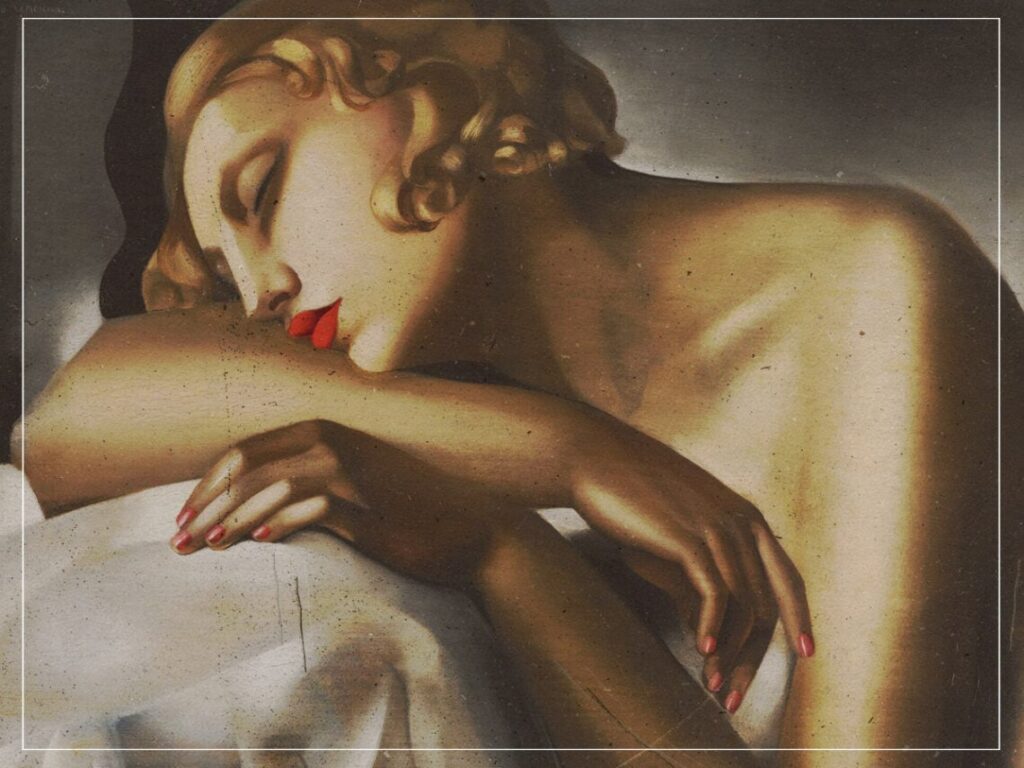The pioneering art deco style of Tamara de Lempicka
 Posted On
Posted On
(Credits: Far Out / Sotheby’s London)
Not every artist finds their genius being celebrated from the second they put brush to canvas, but Tamara de Lempicka was at least still alive to enjoy the huge uptick in interest that accompanied her work when art deco began to enjoy a huge resurgence in popularity during the 1960s.
Her commissions to create new work had dwindled in the post-war era as modernism and abstract expressionism emerged to render art deco increasingly anachronistic, with de Lempicka into her 70s and on the cusp of relocating to Mexico for the twilight years before her death in 1980 at the age of 81 when the first major retrospective of her work was held in Paris in 1972.
Born in Poland, de Lempicka emigrated to Paris with her first husband following the French Revolution, and she quickly sought to maintain control over not only her image but her artistic destiny. Her earliest works were signed as ‘Lempicki’ to withhold her gender from an art world that wasn’t entirely accepting of women forging such a bold stylistic path at the time, and she remained distant from daughter Kizette while making her a regular fixture of her paintings.
The portrait series Kizette in Pink, Kizette on the Balcony, Kizette Sleeping, Portrait of Baroness Kizette were painted over decades, ensuring that any fractures in the familial relationship weren’t reflected in her contributions to art. She even became a member of high society and earned the nickname ‘The Baroness with a Brush’ after marrying Raoul Kuffner in 1934, but she was openly – and occasionally scandalously – bisexual.
Nick Deimel – a senior art specialist at Sotheby’s – described de Lempicka as “sort of a Warhol before Warhol” to Town & Country. “She was an expert at not only hiding her identity from the public but controlling it and rendering it as she saw necessary,” he explained, which only served to craft further layers of mythology around an artist widely regarded as being well ahead of their time, to begin with.
Her signature style blended cubism and neoclassicism, with many of her most striking works featuring bold colours, dramatic poses, and a number of creative muses that ranged from the aforementioned Kizette to the many lovers male and female she picked up along the way, whether it was her portraits of aristocracy or her stylish nudes. Contrast was key, something she adhered to in real life by balancing her status as a baron’s wife with rampant hedonism.
The Mother Superior featured a nun with a tear rolling down her cheek, Escape depicted refugees, while Surrealist Hand introduced more elements of surrealism, with The Key one of several later works that depicted still life. De Lempicka would mix things up in her later years to try and maintain relevance, but she was never better than when luxuriating in her own distinctive style. She tried her hand at many disciplines, but art deco was where she made her name, and few paintings encapsulate the entire movement better than Tamara in the Green Bugatti.
The self-portrait was commissioned for the cover of a German magazine, and it was de Lempicka to a tee. The cubist composition was there, the use of colour was stark and evocative, while the subject was the epitome of glamourous living, with the vivid sports car underlining that the artist wasn’t one for bowing to convention. It wasn’t even a Bugatti, either, but a Renault. That was de Lempicka, though; she was the master of her own destiny who made her own luck, and one who wasn’t interested in the trappings of normalcy. If she said it was a Bugatti, then it was a Bugatti for all intents and purposes.
Group painting Women Bathing, the flamboyancy of Myrto, Two Women on a Couch, the erotically-charged subtleties of her Madame Boucard portrait, and many of her other sapphic artistic pursuits caused pearls to be clutched and accusations of indecency to be bandied about on a regular basis, but de Lempicka didn’t care in the slightest. She was driven by desire in more ways than one, and the buttoned-up societies of her most fruitful period would need to accept that there was a trailblazer in their mix, unconcerned with such prudishness based on nothing more than her influential contributions to the medium.
[embedded content]


